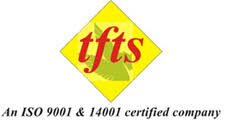
In the bustling world of business, success lies in more than just dreams and aspirations. Data-driven decision-making is essential for business success. HR metrics empower organizations by unlocking their potential. HR metrics (or human resource metrics) are key data points used by businesses to track and analyze the performance of their human resources. Trendsetters Facilities and Technical Services (TFTS), India’s leading HR outsourcing company explores 10 essential HR metrics that can revolutionize your business, catapulting it to the zenith of success.
1. Employee Turnover Rate
The employee turnover rate measures the percentage of employees who leave the organization within a specific period, typically a year. A high turnover rate can indicate underlying problems such as low employee satisfaction, poor management, or inadequate career development opportunities. By reducing turnover, organizations can save costs on recruitment, onboarding, and training while fostering a stable and engaged workforce.
2. Cost per hire
Cost per hire is an HR metric that calculates the average expenses incurred by an organization to hire a new employee. It includes both internal and external costs such as interviewing costs, advertising, relocation fees, etc. This tool assesses recruitment efficiency. For example, a lower cost per hire indicates improved talent acquisition practices and cost-effectiveness.
3. Time to Hire
Time is money, and in the competitive corporate landscape, swift hiring processes can give a company a considerable edge. The Time to Hire metric gauges the efficiency of the recruitment process, from posting a job opening to the moment a candidate is hired. By streamlining this process, HR can secure top talent before competitors even know they’re available.
4. Quality of hire
Quality of hire is an HR metric that measures the effectiveness of a new employee. It gauges their performance, skills, and cultural fit. For instance, a software company assesses how well a newly hired developer meets project goals and collaborates with the team.
5. Employee Productivity
Employee Productivity is the heartbeat of any successful organization. Measuring output per employee can provide valuable insights into individual and team performance. Identifying top performers and nurturing them while offering support to underperformers can optimize overall productivity and drive business growth. It evaluates how efficiently a worker completes tasks.
6. Absenteeism Rate
Absenteeism Rate is a vital metric in assessing employee well-being and engagement. It not only highlights potential health and job satisfaction issues but also enables HR to develop targeted wellness programs that enhance employee engagement and reduce unplanned absences.
7. Training and development
Training and development are essential to employee growth and skill enhancement. By tracking the Return on Investment (ROI) of training programs, HR can assess their effectiveness and allocate resources strategically. This ensures that every rupee spent on employee development reaps dividends in the form of improved performance and innovation.
8. Diversity and Inclusion Index
Diversity and inclusion are not just buzzwords; they are the cornerstones of a successful modern workplace. This measures the representation and equitable treatment within the organization. HR’s role in promoting diversity fosters creativity, sparks innovation, and paves the way for a harmonious and united workforce. For instance, a company tracks the percentage of women and minorities in leadership positions to measure its progress in promoting a diverse and inclusive workplace.
9. Time-to-Fill Positions
Time-to-Fill Positions measures the time taken to fill vacancies. A shorter time to fill prevents productivity gaps, eases existing employees’ workload, and improves efficiency by attracting top talent and streamlining the hiring process. However, caution is needed as speedy hiring can lead to potential recruitment mistakes.
10. Employee engagement
Employee engagement measures employee commitment, enthusiasm, and satisfaction, influencing productivity, innovation, and loyalty. HR uses surveys, feedback, and interactions to identify and enhance engagement.
HR metrics can help companies make better decisions and implement strategies that lead to sustained growth and improved performance.





